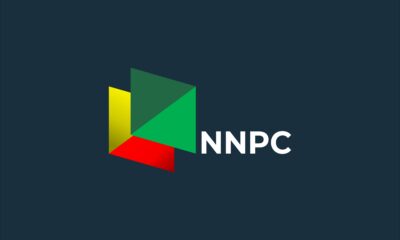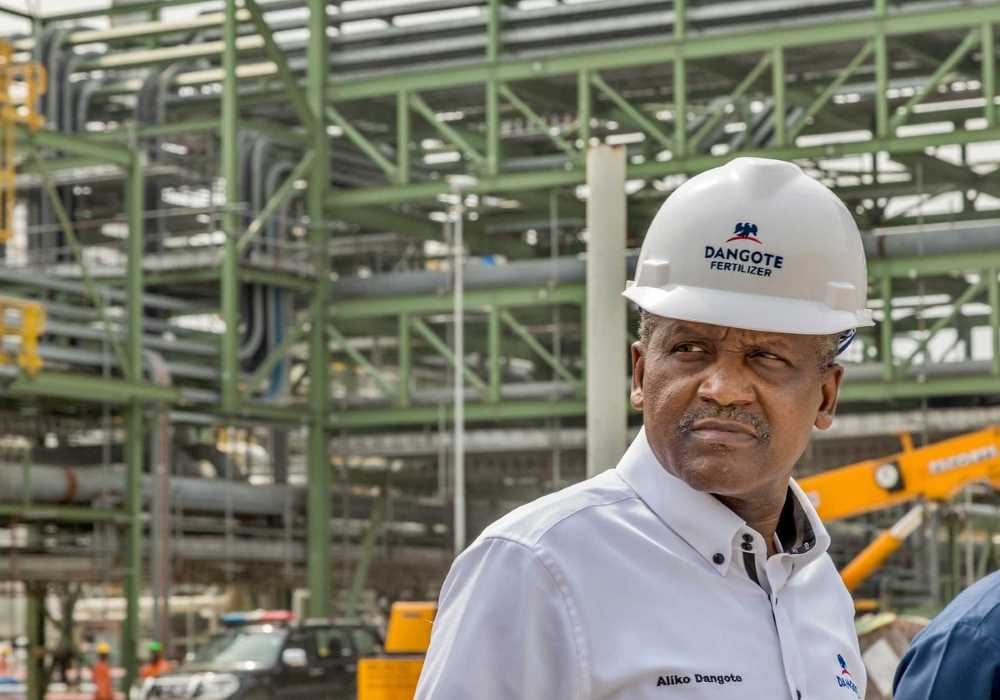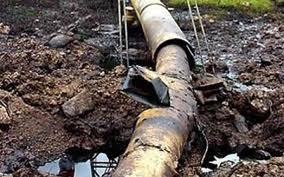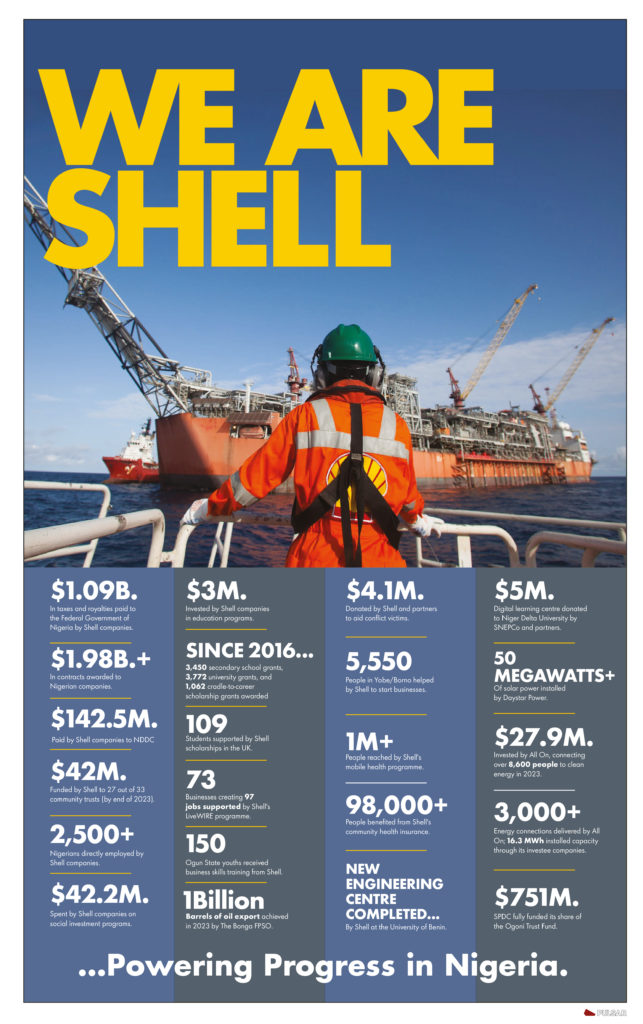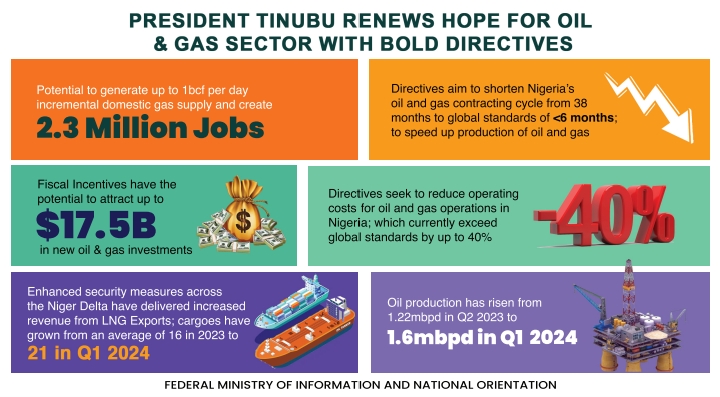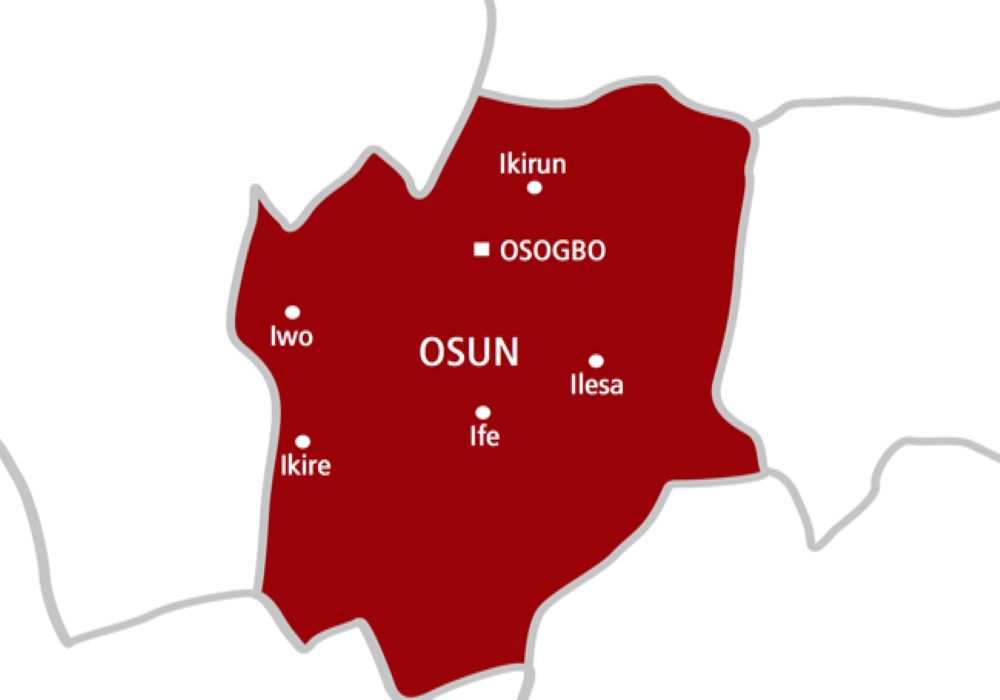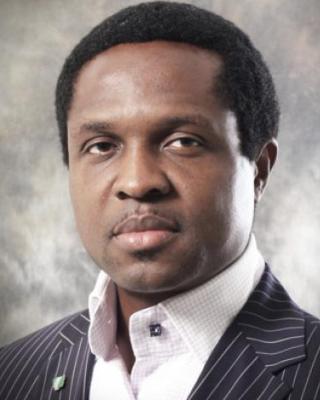DrillBytes
Fuel hoarding and guerilla marketing

By Kayode ADEOYE
LAGOS-FUEL scarcity is back in Nigeria in a monstrous dimension. It started in the last quarter of year 2015 and continued unabated. A man-made plague that is big business for some, and big wahala (trouble) for others. The menace makes government look irresponsible and outrightly insensitive. In a way, the government is fighting a system and the system is fighting back only this time, with the latent potential of turning the people against their leaders! Drillbytes, this week, brings to the fore the racketing behind the scarcity and what government can do to make this multi-million dollar business a multi-trillion naira liability for the fuel racketeers.
Since 1998, Nigeria has been spending billions of Naira on subsidy of petroleum products to cushion the effects of the increase in pump price of the products. Unfortunately, the refineries are not working at full throttle and even if they are, they can only produce half of the country’s demand implying the other half will be sourced from without.
 As if this is not bad enough, the 22 fuel depots across the country owned and managed by the state owned Pipelines and Petroleum Marketing Company, PPMC is moribund and in dire need of rehabilitation. Due to these reasons, government licensed private investors to import petroleum products into the country, store and distribute to various filling stations across the country through trucking.
As if this is not bad enough, the 22 fuel depots across the country owned and managed by the state owned Pipelines and Petroleum Marketing Company, PPMC is moribund and in dire need of rehabilitation. Due to these reasons, government licensed private investors to import petroleum products into the country, store and distribute to various filling stations across the country through trucking.
The independent marketers presently import 50% of the country’s daily consumption while the state owned Nigerian National Petroleum Corporation, NNPC imports the balance of 20 million litres. Good a thing, it has been reviewed to 78%/22% for the NNPC/Independent marketers. Better still, if it is 100%/0! As a result of this imbroglio, it looks to many, like the NNPC is doing nothing!
Yet, the NNPC imports refined products and distributes accordingly while the independent marketers import their quota and may decide to distribute or not depending on how they feel about issues of pricing variations generally referred to as subsidy. They hoard their quota and the vacuum created makes the NNPC’s ration grossly inadequate to nourish the voracious appetite of consumers.
The Petroleum Minister, through the Directorate of Petroleum Resources, DPR has shut several independent fuel depots and filling stations across the country for hoarding fuel. As a matter of fact, some defaulting filling stations have had their product dispensed free of charge to consumers. Apparently, these measures are not deterrent enough as the practitioners have found ways round it! The NNPC says that the landing cost of premium motor spirit, PMS otherwise referred to as Petrol across all depots is N77.00/litre for which it must pay a subsidy of about N10.00/litre. Petrol presently sells at government regulated price of N87.00/litre but at the height of the menace, it can sell for as much as N400.00/litre!
The independent marketers complained that they owe banks for the last import they made and government must pay them their accruable subsidy for things to be normalized. Government on its part, said the subsidy was not captured in the last budget and at such went ahead to make a supplementary budget to capture the close to N500B subsidy payments, approved by the country’s national assembly and dispensed to the marketers. While this was ongoing, the consumers were suffering, the artisans were gnashing their teeth and the economy was being asphyxiated.
Apparently the racketeering marketers have devised devious means of checkmating the DPR onslaught as they dispense fuel in the late hours of the night or wee hours of the morning because they believe the DPR officials work from 8:00hrs to 17:00hrs daily.
They in turn sell fuel at the depots and at the filling stations between 19:00hrs to 22:00hrs and 05:00hrs to 08:00hrs of the night and day respectively at rates far higher than the approved rate. Small wonder fuel tankers move more in the night than in the day during fuel scarcity, man-made, that is. These carefully selected hours of dispensing fuel by the independent marketers are not rigid but very flexibly sensitive to DPR inquisitions and the stark truth is that any DPR official that attempts to sanction the erring marketers will probably meet with the wrath of irrationally desperate consumers. It is that bad. This, therefore, is how the independent marketers are making humongous profit out of a well concocted problem in the name of the government and in solidarity with the people!
As has repeatedly been submitted by DrillBytes, the options open to the government is to continue paying subsidy to the independent marketers while fixing the refineries and depots, appoint the NNPC the sole importer of refined petroleum products into Nigeria which they can now sell to independent marketers for effective distribution to consumers across the country and at government approved price or privatize the refineries, the depots and allow free market economy take control. Of all these options, DrillBytes is certain, the most cost effective, people friendly and chaos sensitive is for the NNPC to be the sole importer of fuel in the short term, while fixing of refineries and depots is ongoing and in the medium term, privatization.
The racketeers have inflicted terrible pains on the people and the country for far too long, it is time to put them where they belong; A cage! Yes, it is time to take care of the subsidy challenge once and for all and effectively decimate the racket behind the market.
drillbytes1@gmail.com
DrillBytes
Reviving a bunkered economy

By Kayode ADEOYE
LAGOS-IN an article written for Africa in Transition by Emily Mangan, an environmentalist, bunkering deals with the storage of petroleum products in tanks. In marine terms, bunkering is the process of supplying fuel to ships for their own use. It is the criminal aspect of bunkering activities that is not sanctioned by any applicable law that is generally referred to as illegal bunkering.
The term, illegal bunkering, therefore refers to all acts involving oil theft, including diversion and smuggling of oil and unauthorized loading of ships. A common process requires tapping into an oil pipeline and transporting the oil elsewhere to be sold internationally or refined locally. In order to access the oil, a small group of welders will puncture a pipeline at night, establishing a tapping point from where the group can operate.
Theft accounts for roughly 15 percent of Nigeria’s 2.4 million barrels per day produced. Oil theft or “bunkering” occurs throughout the Niger Delta, where pipelines crisscross the region. Oil exports revenue accounts for 70 percent of Nigeria’s total government revenue.
A loss of 300,000 barrels a day costs the government roughly $1.7 billion a month. In comparison, only 5,000 to 10,000 barrels are stolen per day in Mexico, which produces a comparable amount of oil. Pipeline vandalism from bunkering leaves pipes especially vulnerable to leaks, spills and major accidents. Roughly, a quarter of stolen crude oil is sold locally. Illegal artisanal refineries “cook” the crude into separate petroleum products.
The end product yields 2 percent petrol, 2 percent kerosene and 41 percent diesel. The remaining 55 percent of crude goes to waste, most of which is dumped into a nearby body of water or into a shallow pit. Last year, the Nigerian Navy destroyed 260 illegal refineries by burning the site and in some cases, pouring out the stolen oil into the creeks, exacerbating environmental damage. Despite the efforts of the military, other refineries pop up elsewhere because it is such a lucrative business. Each refining camp costs only about $4,700 to set up and can make $7,800 a month in profit. The cost of construction is typically no more than 7 percent of annual profits.
In an interview conducted by John Gambrell of the Associated Press on July 30, 2013, Patrick Dele Cole, a former Nigerian ambassador to Brazil said, “This oil that you are buying is the same thing as blood diamonds. The vast majority of the theft actually sees the oil taken out of the country into Eastern Europe, South America and Asia for sale. Those supporting the theft include Nigeria’s military and the nation’s political elite”. Nigeria’s immediate past finance minister lamented that about 250,000 barrels of Nigerian crude was stolen daily between 2012 and 2014 with no high profile arrests made. Isn’t it obvious who the thieves are?
Stories abound of how the stolen crude is exchanged for cash, ammunitions or both on the high seas. In spite of heavy losses by the illegal oil bunkerers, the business still thrives and Nigeria still loses substantial revenue along the line. According to Thisday Newspapers of October 27, 2015, government through the Directorate of Petroleum Resources, DPR offered to revive structured crude oil bunkering by granting license to some of the bunkerers, 91 of which have submitted bids
The ban on bunkering in 1979, according to the newspaper contributed to the upsurge in illegal bunkering activities which is directly inflicting terrible pains on the economy of Nigeria. Perhaps, if government can lift the ban on bunkering, some of the illegal bunkerers can obtain license from the DPR and help in restructuring the illegal business to the advantage of the country.
The Nigerian military have arrested several low profile illegal bunkerers over time but such arrests rather than dissuade the criminals emboldens them. The current Chief of Naval Staff, in an interview he granted Channels Television, bemoaned inadequate patrol boats and attack ships to police the country’s vast territorial waters as well as insufficient funds to adequately fuel the available ships.
The Navy’s setback is the illegal bunkerers’ motivation! The country is not in financially good times but then, if a reasonable fraction of what is lost to illegal bunkering activities is committed to fighting the menace, a drastic reduction in the activities of the criminals will be enforced.
Now that Yudala, an online shop has delivered its first merchandise to a shopper in Lagos (Herald online newspaper of 29th November, 2015) with the aid of a drone, the law enforcement agents will perhaps, start considering the use of drones to gather intelligence on this organized crime and use the superior advantage the technology has to offer in checkmating the activities of the bandits. For more on the technicalities of drone deployment, refer to DrillBytes of October 21st, 2015 published by the Guardian Newspaper.
Yes, if a drone can be used to deliver peace of mind, it can equally be used to deliver peace of the graveyard! Restructuring bunkering is another way of combating the activities of illegal bunkerers. Furthermore, Nigeria needs to understudy Mexico and see what it can learn from the country in terms of crude management and this is besides looking inwards to weed out the fifth columnists (military and politicians) sabotaging the efforts of government at deterring the criminals. These, in the opinion of DrillBytes, are some of the ways by which Nigeria’s bunkered economy can be revived.
DrillBytes
China’s energy odyssey and lessons for Nigeria

By Kayode ADEOYE
LAGOS-AN article that appears in the Economist of November 28th, 2015 detailing how China, one of the world’s biggest drawbacks in the global effort at curtailing the effects of climate change on mankind is dusting itself up to walk its talk on the matter, is here, served.
When the nations of the world first tried to cut a deal to reduce greenhouse-gas emissions in the late 1990’s, America, then the world’s biggest polluter, would not consent to mandatory reductions, all but strangling the accord. These days, China is the biggest polluter and the country without which no global agreement will stick.
China emits more greenhouse gases than anywhere else in the world partly because it has a lot of people; 1.4 billion, compared with 800m for America and the European Union put together. Much of the pollution China causes comes from making goods for other countries. It has been established that once the pollution that goes into traded goods is assigned to the country that consumes them, the average Chinese person harms the planet less than does the average European and much less than the average American.
China was responsible for three-quarters of the net coal-fired power generating capacity added worldwide between 2000 and 2014 and the country’s hunger for coal is not limited to its power stations. At least, a quarter of Chinese coal is used in what Laszlo Varro, a fossil-fuel expert at the International Energy Agency, calls a “Dickensian” manner. Burned inefficiently in boilers to heat buildings and power textile mills, it has fouled the air around Chinese cities turning them into a replica of 19th-century Manchester.
Climate change denial is strikingly rare among China’s political leaders, some of whom trained as engineers. They understand that their country is expected to suffer some of the worst consequences of global warming; Northern China, which is increasingly hot and dry, will probably become hotter and drier still. The politicians are also well aware that their country’s urbanites are fed up with breathing toxic air. Before 2012, no city disclosed air-quality data, recalls Ma Jun of the institute of Public and Environmental Affairs in Beijing.
Now, about 400 cities do. Around the big cities, heavy polluters are increasingly chivvied to clean up. To an extent, the problem is simply being pushed from China’s coastal cities towards the interior. The coal-fired power stations that are shutting the east coast are some of the most polluting in the world. The new ones being built in the west are some of the world’s best.
They burn coal at higher temperatures and use higher pressures making them more efficient. China is also throwing money at nuclear power and renewables. It spent almost one dollar in every three invested in renewable energy around the world in 2014, according to Bloomberg New Energy Finance, a research firm. Last year, China got about 11% of its energy from renewables, helped by an unusual quantity of rainwater to power its hydro-electric stations. The country also claims to have connected five gigawatts of solar power to the grid in the first three months of 2015, almost the equivalent of all the solar panels in France.
Some of this renewable power is wasted. In China’s command and control energy market, power stations are contracted to produce electricity months in advance. Although the energy companies are supposed to favor renewables, they find them hard to handle because their supply is not reliable and many coal-fired power stations supply heat as well as electricity to local customers, making them preferable to solar and wind farms in winter. In short, says Li Shuo of Greenpeace, an environmental group, China is trying to plug 21st century power sources into a 20th century power grid. Behind closed doors, though, officials are working to make the energy market a little more welcoming to green power.
Even more than the clean-air regulations or the renewables, it is China’s economic slowdown and the shift from heavy industry and construction to services that has been curbing demand for coal. Mr Varro points out that China can hardly go on consuming energy-intensive goods like steel and cement the way it has done. In 2012, Chinese cement consumption amounted to 1,581 kilograms per person, compared with just 232kg in America.
Nobody quite knows how much coal is burned in China. Misreporting is common; earlier this year, official statistics were amended to suggest that the country consumed 14% more coal between 2000 and 2013 than had been thought. Yet, the quantity might now be falling.
Consumption seems to have dropped very slightly between 2013 and 2014. In the first seven months of 2015, China’s mines produced 5% less coal than they did during the same period last year. If this trend were to continue, it would make the government’s pledge to reach peak greenhouse-gas emissions by 2030 seem unduly modest. China will remain a heavy polluter.
Though steel and cement factories will probably use less energy in future, ordinary people will doubtless consume more. As they grow richer, they demand air-conditioning, cars and bigger homes. In 2012, the average city-dweller inhabited 33 square meters compared with 25 square meters a decade earlier. Still, the astonishing surge in dirty, coal-fired energy consumption has probably subsided, thinks Mr Grubb. It might just be a little hard to see through the hazy, choking air.
DrillBytes
THE DARKNESS CONUNDRUM

With Kayode ADEOYE
LAGOS-ELECTRICITY providers in Nigeria have changed name several times with phenomenal advancement in the order of darkness! From the state owned Electricity Commission of Nigeria, ECN to the National Electric Power Authority, NEPA and the Power Holding Company of Nigeria, PHCN, it is always, “UP NEPA”. The state owned company has been unbundled and privatized with interrupted darkness and fraudulent billing unchecked! A National Electricity Regulation Commission, NERC was created to regulate the activities of these companies and act as an interface between them and the consumers, regulation is yet to relieve Nigerians.
 The immediate past power minister recently stated that consumers get only 50% of generated power. The present government, according to the Vice-President, is making inroads into nuclear and renewable power supply. Electricity generated currently stands at 4,884MW. The problem is big business to some and fighting it attracts reprisals. The way forward, an abridged paper originally delivered by Professor Abubakar Sambo who is the Chairman of the Nigerian National Committee of the World Energy Council on Oct 20, 2015 is here, served.
The immediate past power minister recently stated that consumers get only 50% of generated power. The present government, according to the Vice-President, is making inroads into nuclear and renewable power supply. Electricity generated currently stands at 4,884MW. The problem is big business to some and fighting it attracts reprisals. The way forward, an abridged paper originally delivered by Professor Abubakar Sambo who is the Chairman of the Nigerian National Committee of the World Energy Council on Oct 20, 2015 is here, served.
At the time of the inauguration of Nigeria’s current President, the available electrical power in Nigeria was about 2,500MW but in less than six months, it almost doubled. The Ministry of Power attributed this to enhanced supply of gas to the nation’s newly constructed gas power plants. Electricity supply of 5,000MW is grossly inadequate for over 170 million Nigerians. Even though access to electricity is available to about 55% of the people, load-shedding or rationing of electricity is widely practiced all over the country. Much more than 5,000MW of electricity is required for the socio-economic growth of the nation. Energy planning experts using modern energy modeling tools estimate that, for the Nigerian economy to grow at a rate of 10%, the country’s electricity requirement by 2020 will be of the order of 30,000MW.
The energy mix for electricity supply will need to be broadened from the current two of Hydro and Gas sources to seven of Hydro, Gas, Solar, Wind, Biomass/Biofuel, Coal and Nuclear. Additionally, there will be a requirement for the strengthening and expansion of the national grid along with improvement of distribution systems as well as promoting the development of fuels for gas, coal and nuclear power plants. There is also the need to update both the National Energy Policy and the National Energy Master plan and pass them into law. The new power plants can be built on the basis of public-private partnerships.
 The government will then divest its involvement after some years in line with the current policy of getting the private sector to generate and distribute. Many advanced countries along with the International Renewable Energy Agency and the Energy Commission of Nigeria will guide the development of the large scale renewable energy-based power plants. The Ministry of Mines and Steel development would guide the development of clean coal power plants while the International Atomic Energy Agency would guide the development of the nuclear power plants. Projects of the embedded generator types should be vigorously promoted at distribution networks to close the gap in local demand and supply by inviting investors, state governments inclusive, to be part of pre-packaged pilot projects in all the distribution companies.
The government will then divest its involvement after some years in line with the current policy of getting the private sector to generate and distribute. Many advanced countries along with the International Renewable Energy Agency and the Energy Commission of Nigeria will guide the development of the large scale renewable energy-based power plants. The Ministry of Mines and Steel development would guide the development of clean coal power plants while the International Atomic Energy Agency would guide the development of the nuclear power plants. Projects of the embedded generator types should be vigorously promoted at distribution networks to close the gap in local demand and supply by inviting investors, state governments inclusive, to be part of pre-packaged pilot projects in all the distribution companies.
The national grid is weak and cannot manage more than 7,000MW, on completion of the ongoing National Independent Power Projects (NIPP) for distribution to consumers. There is urgent need for the grid to be regionalized and privatized to enable the new owners strengthen and expand the grids in line with the dictates of their respective zones. A large part of the existing transmission system is old, unstable and unreliable which results in frequent customer outages at the transmission level. Government should facilitate and encourage the private sector to significantly improve the transmission capacity to deliver power to end users. On distribution, the Federal Government, in line with the electricity power sector reform act 2005, should maximize access to electricity by consumers. The target should be to ensure that there is a distribution mains supply within a distance of 1Km to any consumer cluster in Nigeria.
Expansion of the energy mix for new power plants will require new gas fields as well as the development of both open cast and underground coal mines. The sustainable way of doing this is to entice the organized private sector through pragmatic policies and legislations. This will lead to the creation of thousands of jobs as well as promote inter-ministerial cooperation between the ministers of Agriculture, Petroleum Resources, Power and Steel Development.
It is possible to simultaneously achieve the generation and transmission of a minimum of 8,000MW within 18 months from the date of constituting the Federal Executive Council (FEC) of Ministers because the combined capacity of the old and new power plants is 8,000MW if sustained. This is apart from other energy sources that could deliver another 8,000MW within 36 months of take-off of the FEC.
This, is however dependent on understanding the internal workings of the power sector as well as working to ensure that the existing infrastructure of the power plants operate at optimal level. Ensuring regular supply of gas from oil companies, securing the pipelines, construction of new gas pipelines, cost effective tariff, provision of meters, upgrading single circuit transmitters to double as well as rehabilitation and expansion of distribution networks are all realistic measures of putting the conundrum under light!

